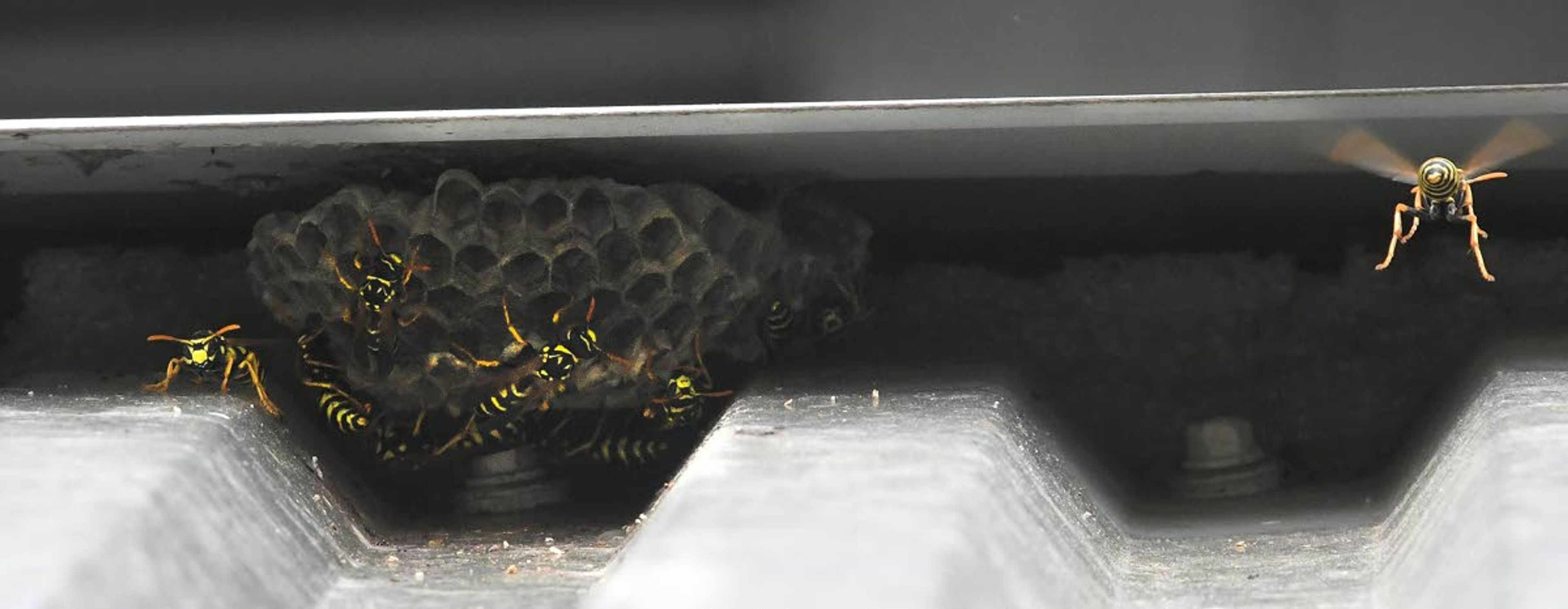What's up with that? Why so many yellow jackets?
And why do wasps get extra mean at summer’s end?
What’s up with that? is a reader question-generated column that runs on occasion in the Tribune. To submit your question, call City Editor Mary Stone at (208) 848-2244, post to the Tribune’s Facebook or Twitter pages, or email whatsup@lmtribune.com.
So you’re up there on a ladder, doing your due diligence, trying to make your wife happy by cleaning out the roof gutters, when all of a sudden you feel a sharp pain in your thumb as if you’ve been stabbed with a darning needle by Boo Radley from across the street.
A closer inspection may reveal that you have unwittingly invaded the territory of a small band of paper wasps whose tidy little nest was tucked neatly inside the gutters.
Oh, yes, it’s wasp and yellow jacket season, and they are looking for revenge like Omarosa Manigault Newman with a new book deal.
“The last couple of years have been pretty favorable to the wasps,” said Richard Zack, an entomologist at Washington State University. “So we’re starting to see a population buildup — this year more than last year. It just builds on itself unless you get some collapse.”
Yellow jackets, the heavier-bodied insects with yellow-and-black stripes, make nests that have a covering over it, like a baseball, Zack said.
Paper wasps, the thinner-bodied buds with long legs, construct open nests. You can even peek inside the cells at the developing larvae.
Milder winters the past two years help such insects survive and thrive, Zack said. Thus, the infestation of annoying and sometimes menacing insects that have ruined many a picnic and frightened the children away from the wading pool.
It won’t last.
“At the end of the year, everything in the nest dies except the newer individuals, which are going to spend the winter. They’re impregnated, waiting to come out (in the spring) but if the winter is harsh, they’ll die,” Zack said.
Perhaps the best way to deal with paper wasps and yellow jackets is to be proactive in the spring when the prospective queens begin building nests.
“As you start to see the wasps coming out — those would be the potential queens — it’s not a bad idea to kill them,” Zack said. “When you’re gardening or just out walking around and you spot nests … just put the leather gloves on and squash it. It’s a small effort, but it’s going to keep the numbers down.”
Traps also work “pretty good,” he said, “but they don’t attract all species. But they do pretty well at this time of year when there are a lot of wasps around. The year is starting to wind down for them as we get into the fall and that wasp queen, she’s not going to lay any more worker eggs. She’s going to lay potential queen eggs and some drone eggs, but the workers are starting to die out.”
Unlike honey bees that sting once and die, wasps and yellow jackets can deliver multiple volleys that in some people can trigger severe reactions.
Zack said there are a number of effective treatments available, including ammonia-based wipes that can be applied to the sting area to take away the pain and keep it from becoming infected.
For most people, it hurts but isn’t life threatening. About one in 100 people, he said, will begin to have a more severe reaction to insect stings, such as swelling of the limbs and throat. Those people should seek medical assistance immediately.
There are some who believe stings from bees, wasps or yellow jackets may even be beneficial and help boost people’s immune systems.
Zack is ambivalent on that piece of homespun wisdom.
“It depends on who you talk to,” he said. “I don’t know if the research is out there to support that, but there are individuals — more with honey bees than with wasps — there are people who believe that the toxins for certain people with certain conditions do have therapeutic use. I’m not sure. I haven’t looked into it that closely.”
For now, people need to be mindful that yellow jackets and wasps are nearing the end of their life cycles and may be just a little bit grumpy.
“It seems like the colonies perceive that the year is ending, and they become a little more aggressive and start to seek out sugars,” Zack said.
Wasps and yellow jackets normally are meat-eaters, preying on aphids and other insects.
“This dry spell is forcing them to find water sources. So your odds of running into them are getting more and more. You just want to be a little more careful now. If you want to clean the gutters, before you stick your hand in there, get up there and look and see if there are any paper wasp nests. Just look around a little bit to make sure they’re not there.”
Hedberg may be contacted at kathyhedberg@gmail.com or (208) 983-2326.











